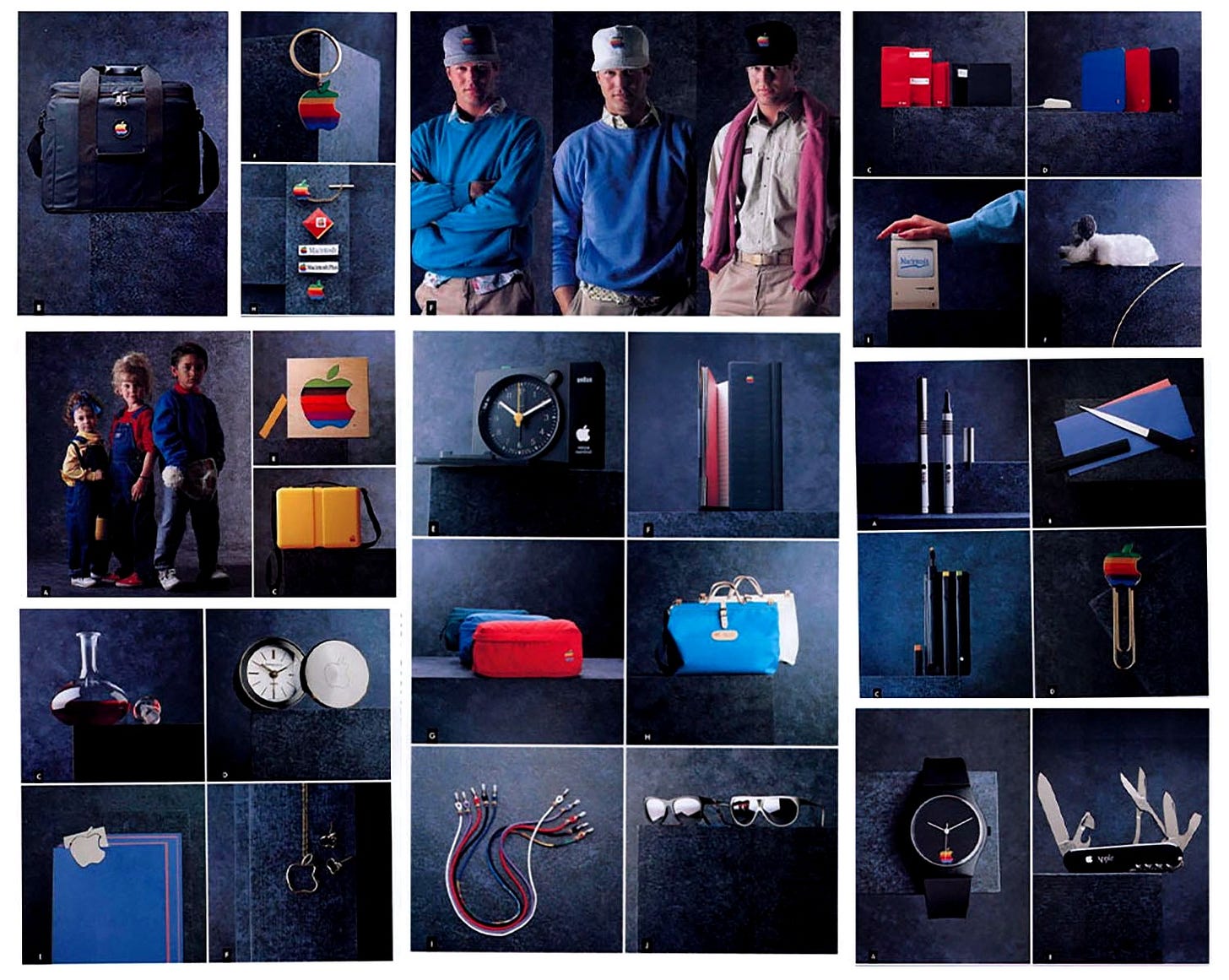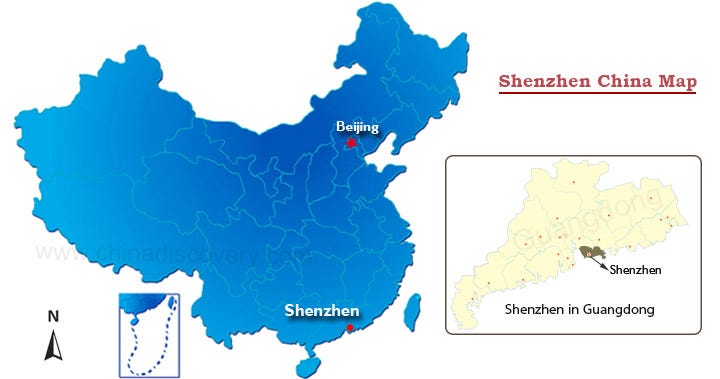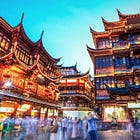The Weekly Signal: #002
How China moves so fast, The Truth about tariffs, Microsoft's original source code, Meta's Llama 4 dominating, Shopify's AI ultimatum
Every week, get the latest curated high signals on news, insights, and ideas around technology, science, business, and innovation to help you become a better well-rounded thinker and builder. You’ll also get an essay or a deep dive every other week.
Did you know...
In 1986, during Steve Jobs’ absence (now at NeXT), Apple—then a sole computer maker—decided to dabble in fashion with “The Apple Collection.” This bizarre catalog featured logoed polo shirts, neon windbreakers, belt buckles, and even a branded sailboard, targeting the yuppie crowd. Priced high and marketed to Apple fans, it aimed to extend the brand’s cool factor beyond tech. Instead, it flopped hard—customers didn’t bite, and the line vanished quietly. Maybe now in 2025, with Apple’s $3T valuation tied to its sleek devices, I feel like it could make a decent comeback — I don't know, I kind of like it. Fits well with my wardrobe and I'd be totally down in buying myself some Apple swag. Here’s this week’s scoop:
Bi-weekly Deep Dive: How China moves so fast!
TSMC is trying to save Intel (a rival)
Why Tariffs Raise Domestic Prices
Artificial Sweeteners Might Make You Hungrier
Shopify just delivered its AI Ultimatum
Rippling vs. Deel - Inside the Corporate Espionage Rocking Silicon Valley
and much more…
Let’s dive in.
🔥 Nuggets for the Road
Our Souls need Proof of Work — “Hard work is necessary for our happiness and well-being” [JULIE ZHUO]
High Agency in 30 minutes (must read!) [GEORGE MACK]
How to build a world-class data room [MARIA VALEVA]
Being a good storyteller and resonating with investors [NIKUNJ KOTHARI]
10 ways to own your time [CHRIS DONNELLY]
A simple technique to help you fall asleep — I needed this 😴 [NY TIMES]
Why is LinkedIn so cringe? 😂 [TRUNG PHAN]
📰 The Signal
TSMC Is Trying to save Intel (A rival)
TSMC, the world’s leading chipmaker with over 60% of the global foundry market (think Apple, AMD, NVIDIA, etc.), is reportedly in talks with Intel to form a joint venture to operate Intel’s struggling U.S. factories. The U.S. government is pushing this deal to bolster domestic chip production amid Intel’s financial troubles—a $18.8 billion net loss in 2024, its first since 1986. TSMC would take a 20% stake, bringing its manufacturing expertise to the table, while Intel hopes to regain its footing after missing the AI chip boom. This could reshape the global semiconductor supply chain, affecting alliances and competition with players like Samsung. It seems like TSMC is playing white knight to Intel (a competitor). This move could either be a masterstroke for U.S. tech sovereignty or a messy marriage of egos—either way, it’s a seismic shift in the chip space. [LINK]
Microsoft’s Original Source Code (50th Birthday Present)
In celebrating Microsoft’s 50th anniversary, Bill Gates shared the original source code that kick-started the company on his blog. Calling it “the coolest code I’ve ever written,” Gates reflects on the early days of software history, offering a downloadable glimpse into the 50-year-old code (written in BASIC). The landing page itself is pretty cool and worth checking out. [LINK, SOURCE CODE]
AI Agents Are Coming for Cybersecurity
AI agents, capable of reasoning and executing complex tasks, are set to disrupt cyberattacks. Some experts predict they’ll soon dominate hacking, with capabilities to autonomously identify vulnerabilities, hijack systems, and steal data at scale. Palisade Research’s LLM Agent Honeypot project is tracking these threats by luring AI agents to fake servers. A benchmark by the University of Illinois found current AI agents can exploit up to 25% of vulnerabilities with minimal info, signaling a looming cybersecurity crisis. This is a wake-up call—that our digital infrastructure and defense systems need to evolve faster than these AI cybercriminals. [LINK]
Artificial Sweeteners Might Make You Hungrier
“Sucralose activates the area in the brain that regulates hunger, and that activation, in turn, is linked to greater ratings of hunger,” — Dr. Katie Page (USC)
A new study reveals that a common artificial sweetener (sucralose) ramps up brain activity in appetite-regulating regions, making you three times hungrier than regular sugar does. As sugar’s health risks drive sweetener popularity, this finding suggests it might actually backfire, fueling overeating instead of curbing it. [LINK, CNN]
Canva Cuts Staff After Pushing AI on Them
Design giant Canva has laid off 10 technical writers after encouraging them to use AI tools, only to find the tech couldn’t fully replace human nuance. This reflects a broader trend: companies rushing to adopt AI often overlook its limitations, leading to job cuts and operational hiccups. Whether we like it or not, this is the trend, and we’re now seeing more companies looking to adopt and adapt AI in more involved and senior roles within companies. Humans will still be needed, but in reduced numbers. [LINK]
Shopify just delivered its own AI Ultimatum
Shopify CEO Tobi Lütke shared in an internal memo to employees how AI is transforming e-commerce and that Shopify is transforming into an AI native company. It’s a stark reminder (like Canva) that these companies are becoming more driven and incentivized by the benefits of using AI tools for productivity in the workplace. The future of work and the workforce is going to look very different over the next couple of years with a hybrid of both humans and AI agents at play. Something to watch. [LINK]
Why Tariffs Raise Domestic Prices
This is probably the best explanation of tariffs I have seen so far. It explains that tariffs, like those proposed by Trump, increase (not decrease) domestic prices by raising the cost of imported goods, which in turn allows domestic producers to hike prices because they have to sacrifice another industry to compensate. This inflationary effect often hits consumers hardest, countering the “protectionist” argument. [LINK]
“Suppose we tax imports of French and Italian wine. As a result, demand for California wine rises, and producers in Napa and Sonoma expand production to meet it. Here’s the key point: Expanding production without increasing costs is difficult, especially so for any big expansion in normal times.
To produce more, wine producers in Napa and Sonoma need more land. But the most productive, cost-effective land is already in use. Expansion forces producers onto less suitable land—land that’s either less productive for wine or more valuable for other purposes. Wine production competes with the production of olive oil, dairy and artisanal cheeses, heirloom vegetables, livestock, housing, tourism, and even geothermal energy (in Sonoma). Thus, as wine production expands, costs increases because opportunity costs increase. As wine production expands the price we pay is less production of other goods and services.”
Meta’s LLaMA 4 Goes Multimodal
Meta finally unveiled LLaMA 4, their multimodal model that processes text, images, and potentially other data, aiming for more human-like intelligence. It’s been a while since Meta launched a new model, and the models were okay but not great. But this one skyrocketed them to the top of the leaderboards. Llama 4 comes in three different flavors: Behemoth, Maverick, and Scout. It turns out that Maverick and Scout were developed from Behemoth, through LLM distillation as a teacher. [LINK]
Is OpenAI finally becoming more “open”?
Sam Altman finally announced OpenAI’s first open-weight language model since GPT-2, set for release in the coming months. With a focus on reasoning, OpenAI is hosting developer events in SF, Europe, and APAC to gather feedback and ensure the model’s utility. This follows a $40 billion funding round, valuing OpenAI at $300 billion. [LINK]
Time is Ticking for TikTok ⏰
TikTok’s faces a U.S. federal mandate to divest the app’s U.S. operations by April 5, 2025, or risk a ban over national security concerns. Now Oracle is emerging as a key player in a potential deal. The plan involves Oracle safeguarding U.S. user data while ByteDance retains control of TikTok’s algorithm, a move that could see Oracle taking a stake in the company. ByteDance isn’t giving up without a fight and still wants to maintain operational control, and the looming deadline adds layers of complexity to the deal. [LINK]
🧐 Trivia of the Week
The answer will be provided in next week’s newsletter.
☺️ By Me
Rippling vs. Deel - Inside the Corporate Espionage Rocking Silicon Valley
Rippling, a workforce management platform valued at $13.5 billion, has accused its rival Deel, worth $12 billion, of corporate espionage in a bombshell lawsuit. The two HR tech giants, both Y Combinator alumni, are battling to dominate the global HR and payroll market, a sector that boomed during the pandemic’s remote work surge. Rippling alleges that Deel planted a spy—a former employee, who infiltrated their systems, accessing sensitive data like sales pipelines, customer churn risks, and competitive strategies over four months. [READ MORE]
📝 Deep Dive: How China Moves so Freaking Fast
I find China endlessly fascinating—not just because of its sheer scale or its history, but because it’s a living case study on how a region has made a clear and conscious decision to propel itself into the 21st century.
I’ve been to China several times, but only through the lens of a tourist. While travelers and others who travel to and/or write about the region usually pore over its rich culture, food, history, and dynasties, I wanted to come at this from another perspective. This time around, I’m drawn to it from a different lens: understanding its technology growth, innovation, and incredible infrastructure.
Why? Because China’s not just playing the tech game anymore—it’s changing the rules, filing more AI patents in 2023 than the U.S. and Europe combined, and outpacing the world in 5G, electric vehicles, AI, civil infrastructure, and so much more.
I’m approaching this from a modern tech perspective because the old narratives like cheap labor, mass production—they just don’t capture the full story any longer.
Instead, this is more about how robots are moving more like humans, AI challenging Western giants (cue DeepSeek), and trains hitting 200 miles an hour, all driven by a system that’s continually evolving and one that has a chip on its shoulder, like it has to prove something to the rest of the world. Everyone, from business leaders, innovators, and even casual tech enthusiasts, should be paying attention, for better or worse.
China’s tech growth isn’t reshaping its borders anymore; it’s rewiring the world, from Africa’s 5G networks to Europe’s EV markets.
What’s blown me away most is how fast China is moving.
I wanted to dig deeper into better understanding the machine that’s responsible for this speed and what’s driving it.
As an engineer, I’m obsessed with the roots of innovation. So I spent weeks going down the rabbit hole, and discovered there are some powerful factors at play in driving this machine, because understanding China’s tech surge might just be the key to navigating everyone else’s future.
Let’s dive in.
Copycat to Innovator
Firstly, to understand (and maybe even appreciate) China's growth, you need to look at the tiny city of Shenzhen, located in southeastern China.
Forty years ago, Shenzhen was just a sleepy fishing village north of Hong Kong, barely a blip on China’s map.
Today, it’s a buzzing metropolis, often dubbed China’s Silicon Valley—it represents a symbol of a nation that’s rewritten the rules of innovation.
Its journey began in 1979 when the former leader, Deng Xiaoping, designated it a Special Economic Zone (SEZ), allowing capitalist practices that attracted foreign investment and migrant talent, growing its population from 300,000 to over 10 million by 2025. This, combined with its proximity to Hong Kong (a manufacturing hub) and a focus on innovation, has turned it into a center for tech giants like Tencent, Huawei, BYD (electric vehicles) and startups like DJI—yes, a lot of people are surprised when they find out that their favorite action-cam or drone comes from a Chinese tech company, and not from California! Oh, and check out this other robotics startup called Unitree—the fact that they’re building life-like humanoids at speed also demonstrates how focused they are on innovation.
Shenzhen’s transformation into China’s Silicon Valley is what sparked this whole investigative journey: how a country once mocked as the world’s assembly line, churning out iPhones and gadgets for the West, has surged ahead in AI, robots, electric vehicles (EVs), infrastructure, and so much more.
It turns out there are four key pillars fueling China’s rise.
READ FULL DEEP DIVE 👇
🙏🏼 Connect with Me
Are you new to the newsletter? Subscribe Here
Learn more about me on my website
Check out my YouTube channel (and subscribe!)
If you’re a founder, apply here (Metagrove Ventures) for startup funding or contact me directly at barry@metagrove.vc
If you think this could be helpful and informative to others, please share it :)
Thanks for reading.
Barry.










